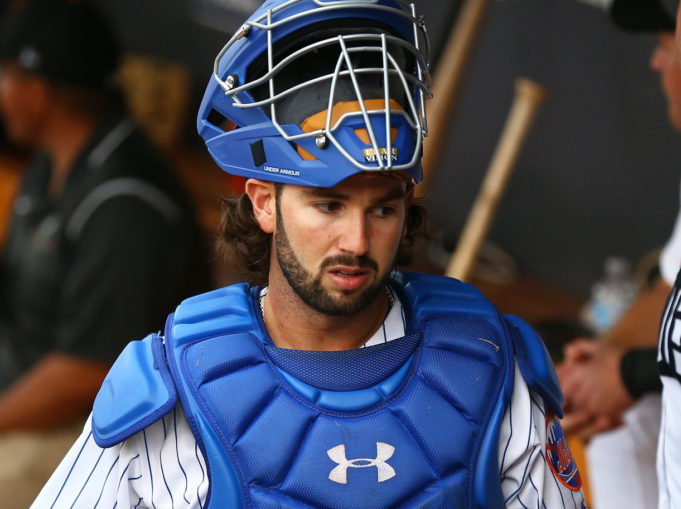Tomas Nido, C
Player Data: Age: 24, B/T: R/R, Free Agency: 2024
Basic Stats: 34 G, 90 PA, 1 HR, 9 RBI, .167/.200/.238
Advanced Stats: 20 wRC+, .193 wOBA, 4.4% BB, 30% K, -0.5 fWAR/bWAR
Grade: D+
2018 Review:
As the story went for a number of younger talents in the organization, Tomas Nido didn’t get much of a shot to prove himself until the last leg of the season. Even with the injuries to both Travis d’Arnaud (partially torn UCL) and Kevin Plawecki (fractured hand), Nido was shuffled to the end of the line behind Jose Lobaton (who hit just .143/.246/.224 and sported a catcher ERA of 6.16) and veteran acquisition Devin Mesoraco (who slashed .192/.274/.301 from June through the end of August).
Nido’s .135/.171/.162 line wasn’t much better, but only came across 10 starts, after which he was optioned to Double-A Binghamton through the end of the summer. Upon returning, Nido started 11 of his final 13 games, hitting just .175/.190/.300 in another uninspiring performance with the stick. He also failed to nab a single baserunner, yielding 10 steals to drag his overall percentage down to 20% for the year.
The one saving grace for the organization’s best catching prospect was his ability as a pitch-framer. With a sample of just under 1700 pitches (nearly a fifth the size of Wilson Ramos, for instance), Nido still netted the 14th-most plus calls in the league (32) while averaging the fourth-most strikes created per game (1.49) among backstops with at least 1500 pitches to work with.
What’s more, Nido’s 2.18 ERA with starting pitchers in that time undoubtedly benefitted the Mets as they charged their way through a trying schedule that featured such talented lineups as those of the Cubs, Red Sox, Dodgers, and Braves. His woes at the plate, while a clear point of concern going forward, could be treated more leniently given his assets on the other side of the ball.
2019 Outlook:
In the event the Mets decide to pursue an upgrade behind the plate like Ramos or Yasmani Grandal, Nido will very likely open next year in the minors as he tries to get his bat going and nab baserunners more consistently. If the Mets are focused on developing Nido further (which they should be, given the years’ supply of scouting reports), they should give him the usual spring training reps and keep him on retainer in Triple-A Syracuse to iron out the wrinkles in his game.
Nido’s career line in Double-A includes a .247/.291/.385 peripheral across 632 plate appearances and a 45% caught-stealing rate on 84 tries. As a point of reference, baseball’s best pitch-framer (per StatCorner), Jeff Mathis, owns a .560 OPS dating back to 2014, but still has a career 1.1 bWAR to contrast his -4.5 offensive WAR. Of course, having an All-Star caliber starter is always the better option, but if Nido can even crack a .600 OPS and take back his knack for putting away runners, he could be a very useful asset on next year’s team. The same can be said of all but nine or ten catchers in baseball right now: do not be fooled by the batting average.
















